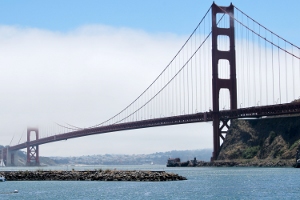This is one of those environmental stories where one event, seemingly far in the past, can have a surprising ripple effect into the future. Most of us think of the Gold Rush and picture prospectors panning for gold in streams and rivers. But some miners used more industrial techniques like hydraulic mining. Using massive, pressurized hoses, they washed down entire mountainsides to get to the gold. (Check out this clip from the KQED special “Saving the Bay” for more).
As a result, millions of tons of sediment washed into rivers and streams in the Sierra foothills and made its way down to San Francisco Bay. Amazingly, that process has taken decades, creating a murkier bay in the meantime. Ten years ago, scientists at the US Geological Survey noticed the bay was clearing. While that can have many causes, scientists believe that the sediment pulse from the Gold Rush had finally worked its way out of the system.
It seems like the story would end there, but sediment has a complex role in the bay. Some ecosystems, especially wetlands, depend on sediment. Salt marshes are built on every high tide by sediment that gets trapped in the plants. These wetlands are also continually sinking as the soil settles, so this growth is key for keeping them at the right elevation. Less sediment in the bay means there’s less for the wetlands, which could be an issue. But there’s one thing that makes it worse: sea level rise. Some estimates say that the bay could rise by 55 inches by the end of the century. That means sediment will have an increasingly important role in the future, one that state agencies are just starting to plan for.
37.827184 -122.421682

